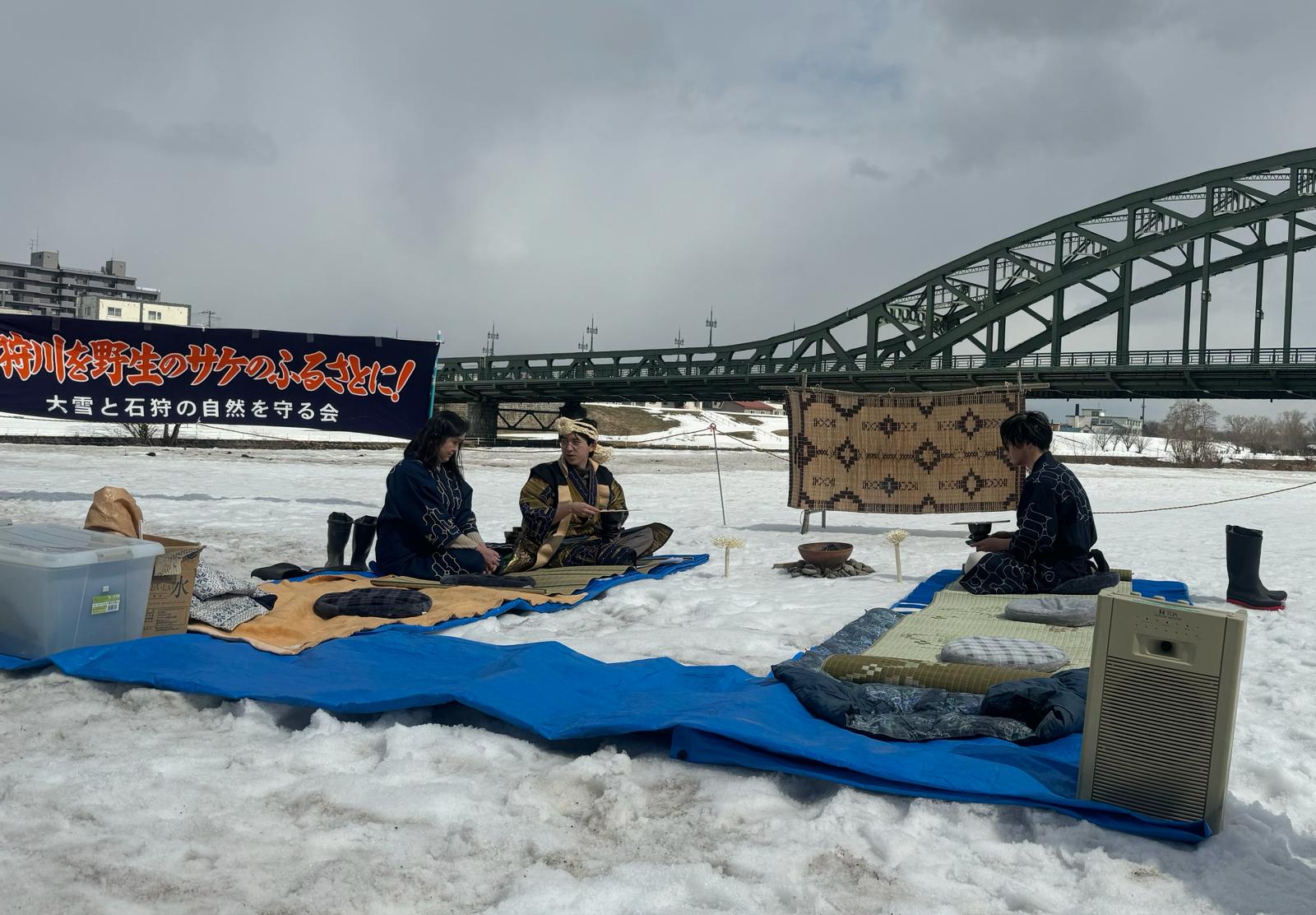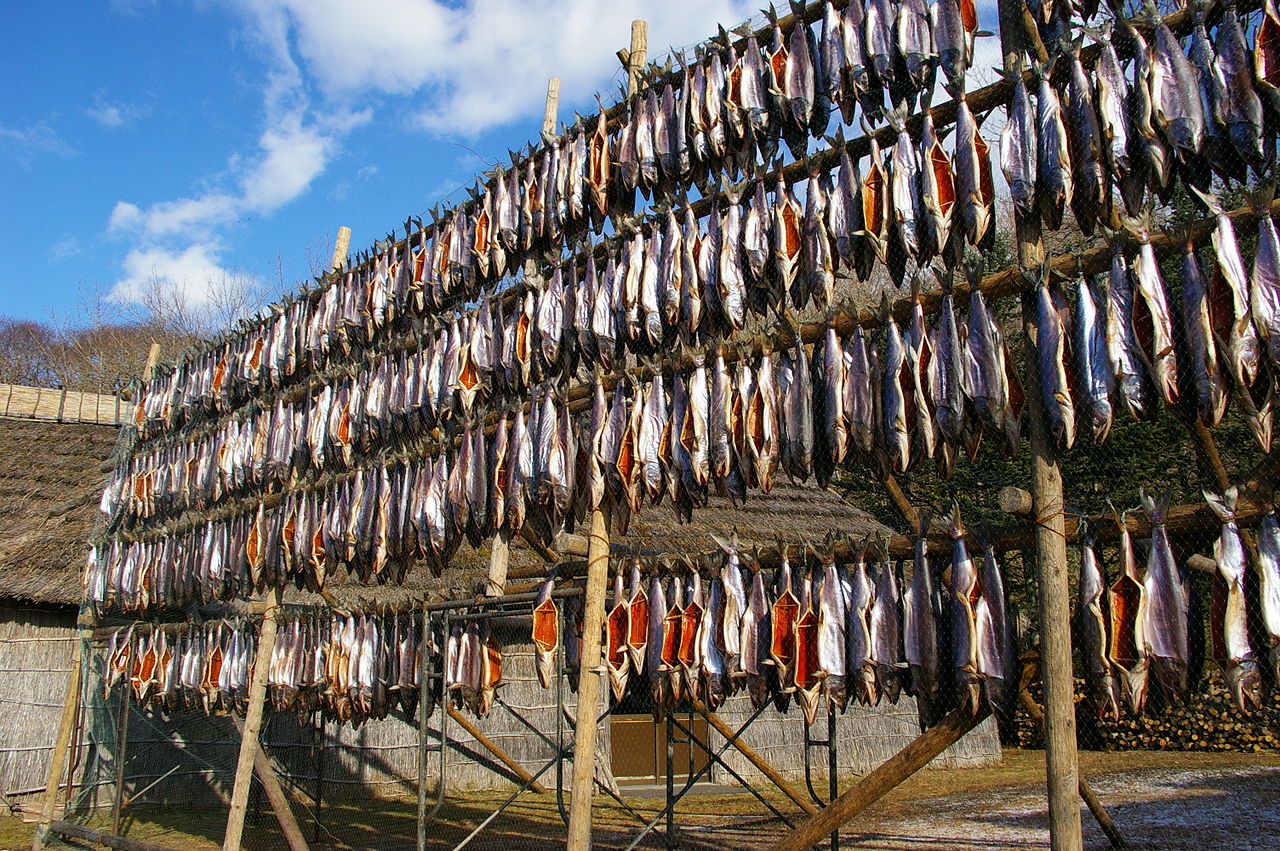十六 – Release of salmon fry into the Ishikari River

Not for the thinly jacketed
It was bitterly cold on the day that I accompanied my daughter and two grandchildren to observe the release of salmon fry into the Ishikari River, on a stretch of land adjacent to the Asahibashi bridge.
In Spring each year, the local Ainu perform a ceremony to celebrate the life cycle of the salmon, after which, baby salmon are released into the Ishikari River. This year, this event was celebrated on 31 March, and in our case, the children from local youchien (kindergartens) had been involved in raising the salmon fry from eggs.
What I hadn’t expected was how cold it would be. Down by the edge of the river, the wind was searing along the snowy foreshore like a razor-edged reaper. It scoured the shoreline, tossing the carefully spoken ceremonial chants into the wind. It was difficult to stand still in a respectful manner, especially for the small children, some of whom were crying miserably.


The small cluster of observers and particpants comprised mainly of the parents and children, a few interested locals, some Asahikawa officials, and the Ainu themselves, who were seated on woven mats between the spectators and the bridge. There was no shelter.

The baby salmon were energetically swimming around in a large pastic tub. We stood in a straggly line, clumping together in small groups to keep warm. Once the ceremonial side of things was completed, and the officials had made their speeches, we stood with our backs to the wind, and made our way to the tub, where each child was given a scoop of babies into their containers. These were gripped tightly in their small mittened hands.
After this we slowly walked down to the river’s edge, with many stops and starts. The track through the snow had been roughly dug, and was a little steep and slippery, so only a small number of children and parents at a time were allowed to carry their precious cargo to the water.

At the water’s edge the children first had to dip their containers into the icy river water so that the fish could acclimatise to their new environment. Then they held the cups partly submerged until the tiny fish swam out. Baby salmon released this year will make their way to the sea, a journey that will take about a month, and can be fraught with danger. Those that survive, will return to the river in three to five years’ time, to lay their eggs and restart the life cycle.
After we’d said goodbye to our fish, we made the way back through the snow to the car. The line was long and meandered like a mottled snake, and I was extremely grateful that we’d been standing near the front and were getting away first.
The wild salmon of Hokkaido
I have read that in in the past, salmon was a critically important food source for Ainu, and that they took great care not to exploit this resource, only catching the number they needed for their own survival. The fish were caught either directly prior to spawning for immediate consumption (fat salmon filled with eggs are unsuitable for preserving), or later on, at which time the fish would be dried.
As we left, I looked back and saw that the local Ainu representatives were packing up their mats and ceremonial gear, and I was relieved to see them pulling on warm jackets.
Traditional Ainu method for drying salmon

